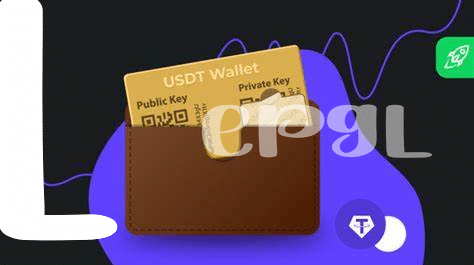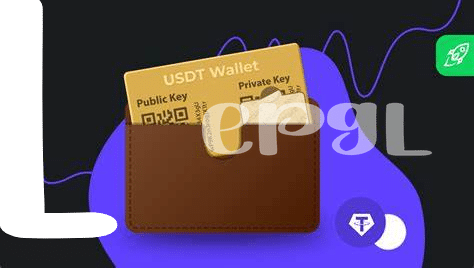What Are Usdt Wallets? 🤔

Picture holding a digital wallet that lets you save, send, or receive money, kind of like an email for your money, but this one deals with a special type of digital currency known as USDT (Tether). USDT blends the best of two worlds: the quick, global nature of cryptocurrency transactions and the stable value of fiat currencies like the US dollar, making it a popular choice for those wanting to dodge the wild price swings seen in other cryptocurrencies.
Now, imagine there are two main types of wallets you can keep your USDT in. To help you choose, think of these wallets in terms of personal safes versus your wallet or purse. The first type, called **cold storage**, is like a high-security safe hidden away in your basement — very secure but not as easy to access quickly. The second type, known as **hot storage**, is like the wallet you carry in your pocket. It’s super convenient for day-to-day use but carries a higher risk if lost or stolen. Your choice depends on what matters more for you: top-notch security or convenience.
| Type | Description | Pros | Cons |
|---|---|---|---|
| Cold Storage | Like a secure vault, not connected to the internet. | Higher security | Less convenient for daily transactions |
| Hot Storage | Like an everyday wallet, connected to the internet. | More convenient for regular use | Higher risk of being hacked |
Cold Storage: the Secure Vault 🏦
Imagine a place as secure as a high-tech vault hidden deep underground, where your most valuable treasures are kept out of reach from anyone but you. This is what cold storage is like for your USDT (a type of digital currency). Unlike keeping your money where you can easily use it but also risk losing it to theft, cold storage moves your USDT off the grid. It’s like storing your jewels in a safe that’s both incredibly tough to break into and hidden away. Without a connection to the internet, these digital safes aren’t just hard to crack; they’re nearly impervious to hackers who prowl the web looking for easy pickings. This level of security comes in handy, especially when you consider how digital currencies operate in an environment that’s still a bit like the Wild West. For those who see their digital assets as a significant investment for the future, locking away a portion in cold storage ensures that their treasure remains untouched, safe from the ongoing battles of the digital frontier. For further understanding, visit this analysis.
Hot Storage: Easy Access, High Risk 🔥

Imagine having a wallet that you can bring everywhere, making it super easy to pay for a coffee or buy something online. This is what it feels like to have your USDT in a type of wallet we call “hot.” It’s like having your money in your pocket or an app on your phone – always ready to use. You can send and receive funds quickly, which is great when you want to make a fast transaction. But, just like carrying cash, there’s a risk. Because it’s connected to the internet, sneaky hackers have tricks up their sleeves to try and steal your money. They’re always on the lookout for a wallet left open.
Now, you might be thinking, “That sounds convenient but scary!” And you’re right. While being able to access your money fast is fantastic, safety is a huge concern. It’s a bit like leaving your house door unlocked; it’s super easy to get in when you’re in a hurry, but it could also invite unwanted guests. So, if you’re someone who values convenience but also worries about keeping your digital money safe, understanding this balance is key. Knowing when to use this “hot” wallet and how to keep it secure can make all the difference. 🛡️🔍📱
Comparing Convenience: Cold Vs. Hot 🔄

When it comes to handling our digital cash, especially USDT, deciding between cold and hot storage is like choosing between a safe hidden in your basement versus a wallet in your back pocket. Imagine cold storage as your vault. It’s incredibly secure, tucked away, and takes a bit more effort to access. Your valuables are safe, but it’s not as handy when you want to make quick transactions or trades. On the flip side, think of hot storage as the wallet you carry daily. It’s super convenient, allowing you to access your funds quickly and make transactions on the fly. However, just like a physical wallet, it’s more exposed and carries a higher risk of being “picked” by cyber-thieves.
Choosing the best option depends on your daily needs. If you’re someone who values security above all and doesn’t need immediate access to your USDT, the cold storage might be your go-to. But if you’re active in trading and require quick access, then hot storage is your ally. Remember, it’s crucial to prioritize safety. In a world where digital currencies are becoming increasingly prominent, keeping up with the latest tether news can offer valuable insights into managing your digital assets effectively. Balancing convenience with security is the key, and understanding your personal needs will guide you in choosing the right storage method.
Safety First: Protecting Your Usdt 💂
When it comes to keeping your digital dollars safe, imagine you’re in a world where pickpockets can be invisible, and your wallet can be reached through thin air. This is where the magic of smart safety tactics comes into play. 🛡️ Think of it as building your very own digital fortress around your treasure. First, there’s the art of crafting super strong passwords—think of it as the moat around your castle. But don’t stop there; enabling two-factor authentication (2FA) is like putting a dragon in that moat. It’s an extra step for anyone trying to get in, making it twice as hard for those digital thieves to grab your loot.
But what if someone does get past the moat? This is where diversification, or not putting all your eggs in one basket, comes into play—you wouldn’t stash all your gold in one room of the castle, would you? Spread your digital dollars across different storage solutions. The table below outlines some key practices to keep your hoard secure:
| **Practices** | **Description** |
|———————|——————————————————————————————-|
| Strong Passwords | Create complex and unique passwords. Think of it as the moat around your digital castle. |
| Two-Factor Authentication (2FA) | Adds an additional layer of security, acting as the dragon in the moat. |
| Diversification | Spread your assets across several storage solutions, reducing the risk of total loss. |
By implementing these tactics, you’re not just securing your digital dollars, you’re creating a realm where your treasure is guarded by layers of ingenuity and caution, ensuring that what’s yours, stays yours. 🏰🔐
Choosing the Right Wallet for You 🛒

When it comes to stashing your USDT—it’s like picking the perfect backpack for a grand adventure. Imagine you’re prepping for a trip. Would you choose a massive, secure suitcase that’s hard to lug around but keeps everything safe (hello, cold storage 🏦), or would you go for a light, easy-to-carry bag that might not be as secure but gives you quick access to your goodies (yep, that’s hot storage 🔥)? Your choice boils down to what matters more to you: security or convenience? If you’re someone who checks your stash frequently or needs quick access for trading, a hot wallet might be your go-to. But if you’re in for the long haul, planning to save without constant checks, then cold storage could be your vault of solitude. However, no matter which path you choose, remember, the journey of cryptocurrencies is full of unexpected twists and turns. Staying informed and vigilant is crucial. For a glimpse at the ever-changing landscape, keep an eye on cardano news for bitcoin’s real-time price, providing insights that could help navigate your decisions. Ultimately, the best wallet is one that aligns with your adventure in the digital currency wilderness, balancing safety with the flexibility you need to explore freely. 🛒✨
